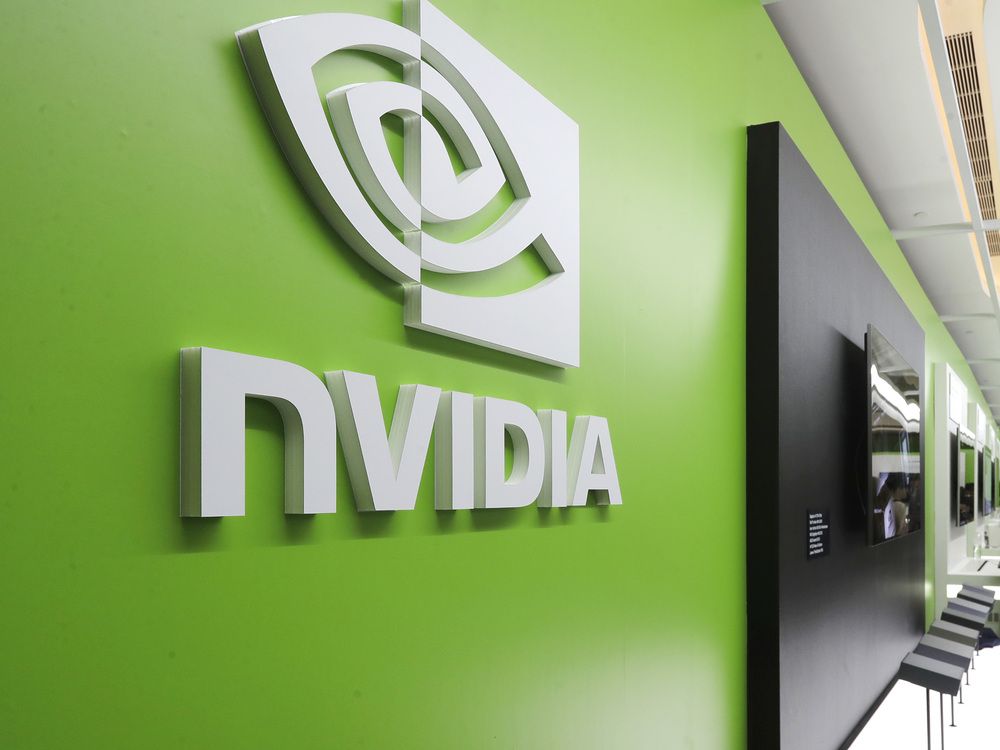Top Stories
Nvidia’s Growth Slows: Revenue Forecast at $54 Billion

UPDATE: Nvidia Corp. has just announced a significant slowdown in growth, forecasting revenues of approximately $54 billion for the fiscal third quarter through October 2023. This forecast follows a remarkable two-year surge driven by artificial intelligence (AI) spending, raising concerns among investors about the sustainability of this growth trajectory.
Despite aligning with Wall Street estimates, many analysts had anticipated revenues exceeding $60 billion. This news comes as Nvidia’s shares dipped by 1.6% in premarket trading on Thursday, although the company’s market capitalization has impressively surpassed $4 trillion this year.
During a conference call on Wednesday, Nvidia’s CEO Jensen Huang emphasized the vast potential for AI infrastructure investment, estimating a market opportunity of up to $4 trillion by the decade’s end. However, the company is grappling with challenges, particularly in the Chinese market, where recent policy shifts have created uncertainty.
The Trump administration’s easing of export restrictions on AI chips to China has yet to translate into revenue recovery.
“We see immense opportunity ahead,”
Huang stated, insisting that interest in deploying AI infrastructure remains strong, despite the current forecast.
Nvidia’s latest earnings reveal a 56% increase in sales year-over-year, amounting to $46.7 billion, but this marks the slowest growth rate in over two years. Analysts had projected lower sales in their models, leading to a wider than usual variance in revenue estimates for the upcoming quarter.
The company is also advancing its financial strategy, approving an additional $60 billion in stock buybacks, which comes on top of the $14.7 billion remaining from its previous repurchase plan at the end of the second quarter.
Nvidia’s data center revenue, now the largest segment, reached $41.1 billion, slightly under the anticipated $41.3 billion. Meanwhile, revenue from gaming, once the company’s primary source, hit $4.29 billion, exceeding average estimates of $3.8 billion.
The company continues to face headwinds from geopolitical tensions, particularly the ongoing U.S.-China rivalry over semiconductor technology. Analysts predict that the tightening of U.S. regulations could hinder Nvidia’s recovery in the Chinese market, where it recorded a significant drop in sales of its H20 AI chip.
Nvidia acknowledged that its forecast does not include potential sales of H20 chips to China, which could range from $2 billion to $5 billion this quarter, contingent upon receiving necessary licenses from the U.S. government. Huang has actively advocated for the approval of more advanced chips for the Chinese market, citing a substantial opportunity.
As Nvidia navigates these challenges, the broader implications for the tech industry remain significant. The company has transformed from a modest graphics processor manufacturer into a leading player in AI, projecting annual sales nearing $200 billion and potentially over $300 billion by 2028.
As the AI sector continues to evolve, investors and tech enthusiasts alike are watching closely to see how Nvidia adapts to these shifting dynamics and what it means for the future of AI infrastructure spending. Stay tuned for further updates as this situation develops.
-

 World3 months ago
World3 months agoScientists Unearth Ancient Antarctic Ice to Unlock Climate Secrets
-

 Entertainment3 months ago
Entertainment3 months agoTrump and McCormick to Announce $70 Billion Energy Investments
-

 Science3 months ago
Science3 months agoFour Astronauts Return to Earth After International Space Station Mission
-

 Lifestyle3 months ago
Lifestyle3 months agoTransLink Launches Food Truck Program to Boost Revenue in Vancouver
-

 Technology2 months ago
Technology2 months agoApple Notes Enhances Functionality with Markdown Support in macOS 26
-

 Top Stories1 week ago
Top Stories1 week agoUrgent Update: Fatal Crash on Highway 99 Claims Life of Pitt Meadows Man
-

 Sports3 months ago
Sports3 months agoSearch Underway for Missing Hunter Amid Hokkaido Bear Emergency
-

 Politics2 months ago
Politics2 months agoUkrainian Tennis Star Elina Svitolina Faces Death Threats Online
-

 Technology3 months ago
Technology3 months agoFrosthaven Launches Early Access on July 31, 2025
-

 Politics3 months ago
Politics3 months agoCarney Engages First Nations Leaders at Development Law Summit
-

 Entertainment3 months ago
Entertainment3 months agoCalgary Theatre Troupe Revives Magic at Winnipeg Fringe Festival
-

 Politics1 week ago
Politics1 week agoShutdown Reflects Democratic Struggles Amid Economic Concerns





















